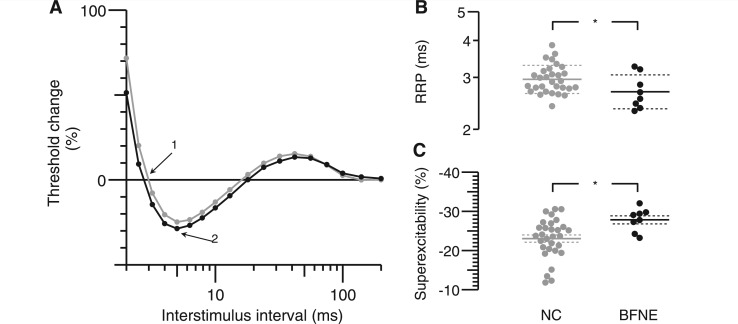Figure 4.
Recovery cycle. (A) Changes in threshold currents at different times after a supramaximal conditioning stimulus (note that logarithmic scales of interstimulus intervals are used). Means of 30 controls are in grey, and eight subjects with benign familial neonatal epilepsy are in black. (B) Distribution of relative refractory periods (RRPs), at which threshold returns to control value, is indicated by Arrow 1 in A (note logarithmic relative refractory period scale). (C) Distribution of maximum threshold reductions is indicated by Arrow 2 in A. Relative refractory period was slightly reduced and super-excitability increased in subjects with benign familial neonatal epilepsy. The small reduction in late sub-excitability was not significant. BFNE = benign familial neonatal epilepsy; NC = normal control.

